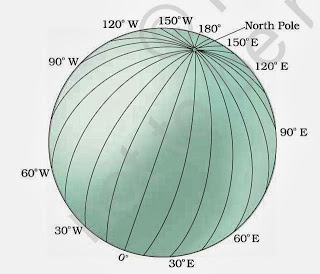Celestial Bodies:
The sun, Moon and all those objects shining in the night sky are called celestial bodies.
Stars are big & hot and made up of the gases. They have their own heat & light which they emit in large amounts. SUN is a star.
Constellations:
Various patterns formed by group of stars are called constellations.
Ex: Ursa Major, big bear, small bear(saptrishi/rishi-sages)
Pole star:
North star
Planet:
Some celestial bodies do not have their own heat & light. They are lit by the light of stars.Such bodies are called Planet.Earth is also planet & get heat & light from its nearest start SUN.
Like our earth there are
eight other planets that get heat & light from SUN some of them even have their moons too.
Solar System:
Sun, eight planets, satellites and some other celestial bodies known as asteroids and meteoroids form the solar system.SUN is the head of this system or family.
SUN provides the
pulling force that binds the solar system.
Planet:
There are eight planets in solar system. All the eight planets move around the sun in fixed path , this path is called orbit.
My
Very
Efficient
Mother
Just
Served
Us
Nuts
Mercury
Venus
Earth
Mars
Jupiter
Saturn
Uranus
Neptune(In order of their distance from the SUN)
Mercury is very near to the SUN , it takes only 88 days for mercury to complete one round along its orbit.
Venus is considered as earth's twins because its size and shape are very much similar to the size of earth,.
Till recently Pluto was being considered as Planet but in a meeting of International Astronomical union, decision has been taken as Pluto like other celestial objects may be called Dwarf Planets.
Earth is third nearest planet to SUN. in Size it is fifth largest planet.It is slightly flatened at pole that is the reason its shape is described as GEOID.
From the outer space , earth appears blue because 2/3 rd surface of earth covered by water.it is therefore called as blue planet.
Earth has only one satellite that is called moon. Its diameter is 1/4th diameter of earth.
Moon takes 27 days to move around the earth and take same time to complete one spin.That is the reason only one side of moon is visible to us on earth.
Asteroid : apart from star , planet, satellite there are numerous tiny bodies which move around the sun , these bodies are called asteroids.They are found between the orbits of mars & Jupiter.
Scientist are of the view that asteroids are parts of a planet which exploded many years back.
Meteoroid:
Small piece of rocks which move around the sun are called meteoroid. Sometime they come near to earth & fall upon it.
****Jupiter , Saturn & Uranus have rings around them . These are the belts of small debris.





















